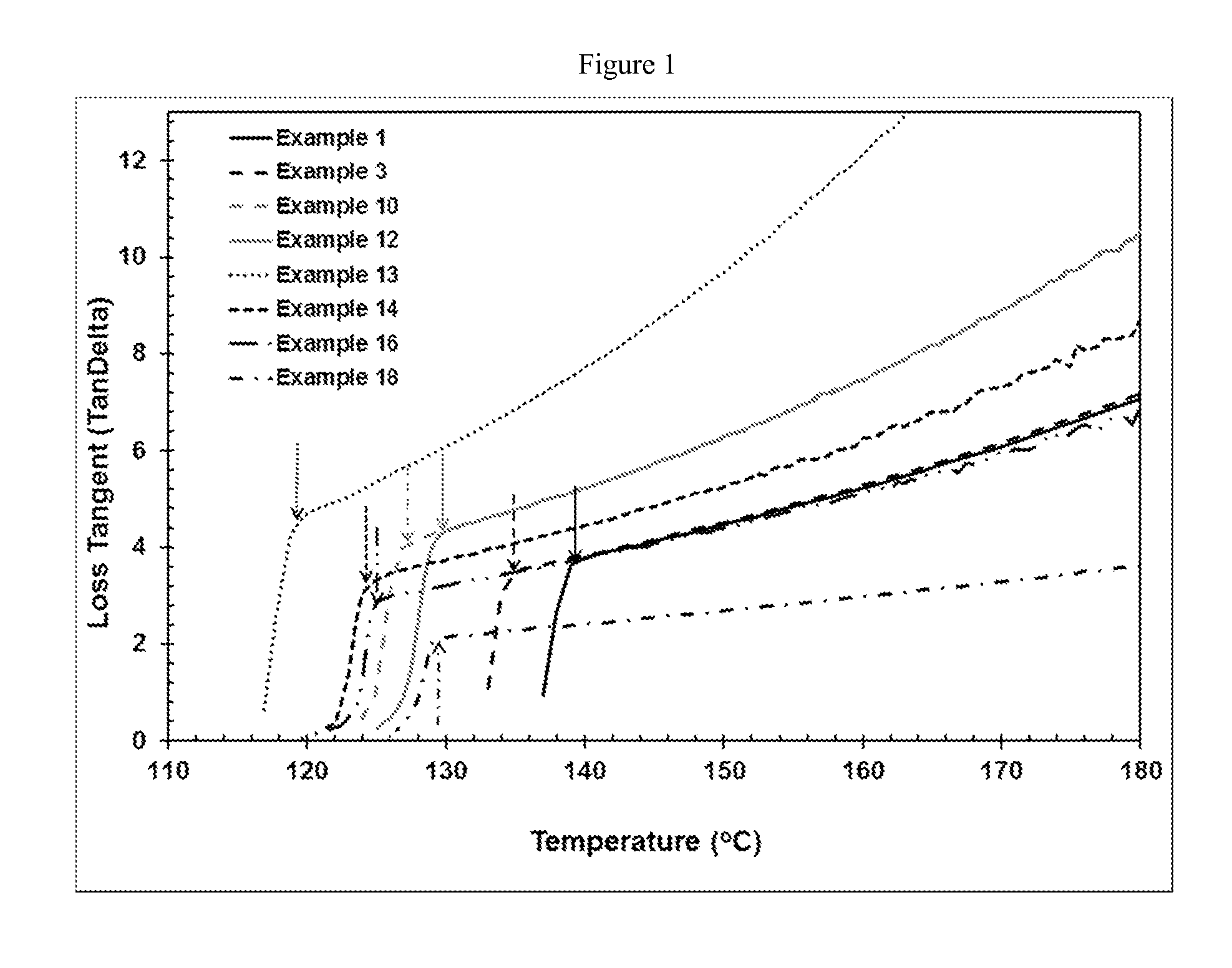Propylene Polymers
a polymer and polymer technology, applied in the field of propylene polymers, can solve the problems of poor fiber and/or fabric properties, low tensile strength/tensile strength, and polypropylene compositions that exhibit acceptable fiber/fabric properties, and achieve excellent processability/spinability, high fabric strength, and high fabric production line speed
- Summary
- Abstract
- Description
- Claims
- Application Information
AI Technical Summary
Benefits of technology
Problems solved by technology
Method used
Image
Examples
examples
[0247]A number of controlled rheology propylene polymers were explored, where a base PP resin with MFR of approx. 0.5 to 5 dg / min and preferably from 0.8 to 3 dg / min was peroxide cracked (controlled-rheology propylene polymers) in an extruder to obtain a final MFR in the range of 10 to 25 dg / min. It was surprisingly found that resins with a certain range of the key melt rheological, crystallization and tacticity parameters described below exhibited the unexpected combination of excellent spinability and high fiber / fabric strength even at low basis weight fabrics (e.g., 2).
Materials
[0248]A propylene polymer PP-1 was treated according to the peroxide visbreaking procedure described below to obtain the inventive compositions of Examples 1 to 8. PP-1 is reactor grade Ziegler-Natta propylene homopolymer in pellet form having a MFR of 2 dg / min, Mw / Mn of 4.3 and a Tmp (10° C. / min) of 164.3° C. PP-1 contains an additive package typical of that used in spunmelt nonwoven applications, e.g., a...
PUM
| Property | Measurement | Unit |
|---|---|---|
| mol % | aaaaa | aaaaa |
| melt flow rate | aaaaa | aaaaa |
| onset temperature | aaaaa | aaaaa |
Abstract
Description
Claims
Application Information
 Login to View More
Login to View More - R&D
- Intellectual Property
- Life Sciences
- Materials
- Tech Scout
- Unparalleled Data Quality
- Higher Quality Content
- 60% Fewer Hallucinations
Browse by: Latest US Patents, China's latest patents, Technical Efficacy Thesaurus, Application Domain, Technology Topic, Popular Technical Reports.
© 2025 PatSnap. All rights reserved.Legal|Privacy policy|Modern Slavery Act Transparency Statement|Sitemap|About US| Contact US: help@patsnap.com



